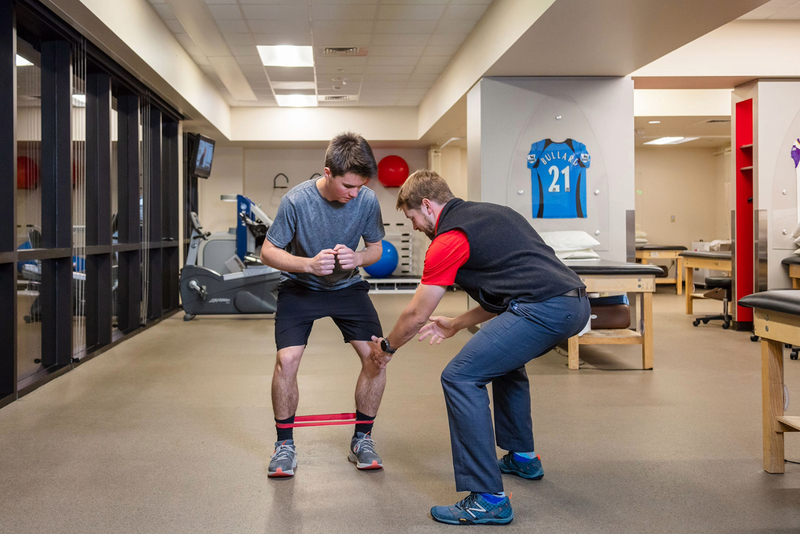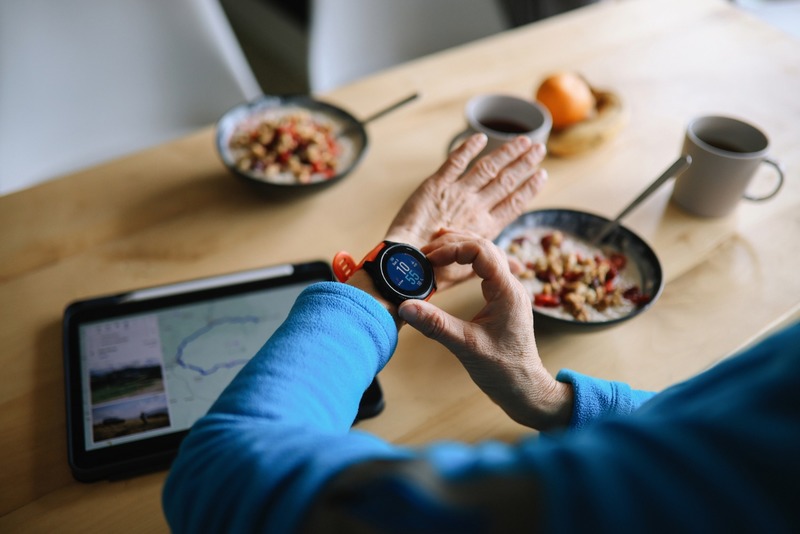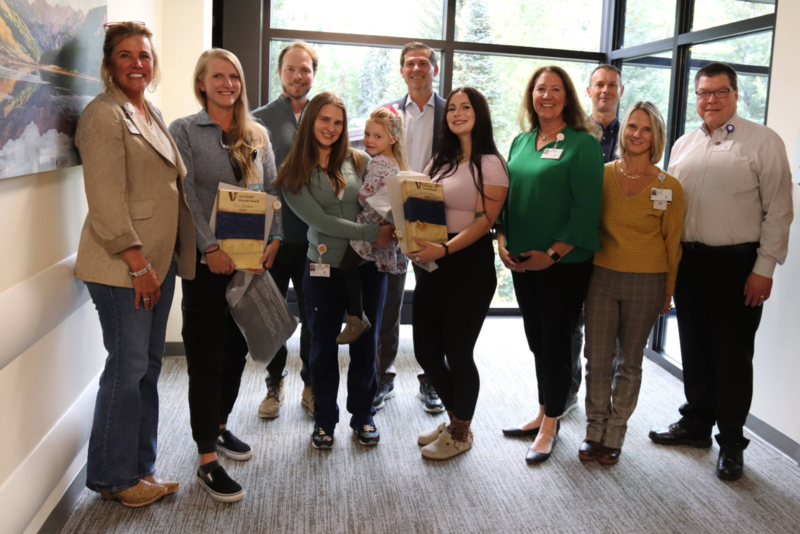News
Understanding ACL Tears: From Risk to Recovery - Part 3

This three-part series covers ACL injuries, from risk to recovery. Learn from experts at The Steadman Clinic, Vail Summit Orthopaedics & Neurosurgery and Howard Head Sports Medicine. While no one wants to be injured, there is no better place to tear an ACL than Vail, Colorado.
Part 3: What to Expect on the Road to Recovery
While ACL tears are common, and super-humans like Lindsey Vonn make reconstructive surgery look easy, the reality is that recovery is a process and it’s different for every person. Because the timeline is so unpredictable, Dr. Tom Hackett, a complex knee surgeon at The Steadman Clinic, recommends managing your expectations when it comes to the recovery timeline.“Don’t get hung up on the week-by-week,” he said. “Recovery is truly a marathon, not a sprint. It’ll all get better in the end, but you have to pace yourself for the long haul.”
Orthopaedic surgeons and physical therapists will provide general guidelines for recovery, offering solace around the idea that you may or may not return to normal activities within 4-6 months, and you may or may not return to full athletic activity within 6-9 months, or even a year. The timeline is intentionally vague in order to set realistic expectations around individual recovery.
“I refer to the averages,” said Dr. Richard Cunningham, a complex knee surgeon at Vail-Summit Orthopaedics & Neurosurgery. “It’s a bell curve. Most patients with a straightforward ACL surgery can recover in eight months, but if you had a concomitant meniscal repair or MCL reconstruction, for instance, it will take longer. Just stick with physical therapy and you will get there.”
Such a “wait-and-see” approach can be especially hard to handle mentally. Whether it’s a young athlete who is sidelined from his sport, a mom who is not able to carry her baby for a few weeks or someone who has torn one ACL and knows how difficult the journey ahead will be, mindset is a critical part of the recovery process.
“I advise people to use the recovery time as an opportunity. Focus on something new–learn to play the guitar or teach yourself how to speak Spanish” said Dr. Hackett. “There is an opportunity somewhere in the midst to get something else out of this experience. And that’s different for everybody. Try to find what your opportunity is going to be.”
Brooke Milliet is a physical therapist at Howard Head Sports Medicine and acknowledges the impact an injury can have on the mind and spirit, as well as the body.
“With an injury like an ACL tear that may take you out of the game for 9+ months, it can be extremely isolating,” she said. “Being social is a necessity in our lives, so don’t forget to find community and human connection in other ways while you are going through this long recovery process.
“We also know that physical activity is hugely important for mental health, and when you feel limited in exercise, it is hard to find ways to move and feel better,” she said. “Talk to your physical therapist about what you can do in the various stages of ACL recovery. It is also normal and expected to have bad days—allow yourself to feel them, have your day, and then find a way to move forward.”
When progressing through any recovery process, working towards milestones is key. Initially, your physical therapist will guide you through the steps towards pain and swelling management, early mobility, range of motion and muscle strengthening. Some joke that PT stands for “part-time” because physical therapy can feel like a part-time job; however, it’s critical to moving through the intermediate stages of recovery, which include increased strength and stability, progressive exercises, gait training and resistance exercises. Dropping the crutches, driving and returning to work/school are early achievements in the recovery process.
It’s important to know that doing more physical therapy exercises does not equate to a quicker recovery. Ambitious athletes are often eager to return to sport and can ignore the calendar, which is truly the most important indicator of recovery.
“Don’t rush it,” said Dr. Hackett. “If your physical therapist says do 10 and you can do 30, still do 10. There is zero value in jumping ahead in the rehab protocol. In fact, it’s detrimental.”
Rushing through recovery can increase the risk of reinjury, delay graft maturation, and reduce the patient’s ability to regain function and performance, potentially leading to long-term complications.
“Reinjury is the most common set-back we see,” said Dr. Hackett. “It happens when someone isn’t patient and returns to things their body isn’t ready for. The patient may feel good and they may think they know their body’s limit, but time on the calendar is the best indicator of recovery.”
In fact, Dr. Hackett explains, a new ACL doesn’t give sensory feedback to the brain. Nerve connections take a year or more to be made, and therefore, the brain isn’t getting information from the new tissue. “Activity level truly can’t be based on how the patient feels. Rather, time and strength-building are the true indicators of progress,” he said.
While patience, time and physical therapy are the keys to rehabilitation, increasing protein intake and taking daily vitamins can help. In addition, stay away from nicotine. Studies show that nicotine use significantly negatively impacts ACL reconstruction outcomes.
“You’d be amazed by how many people are vaping or using nicotine products,” said Dr. Hackett.
Ultimately, return to sport readiness is based on a variety of physical assessments that objectively determine a patient’s range of motion, strength, symmetry and quality of movement.
“At Howard Head Sports Medicine, we continually evaluate our return to sport protocol to ensure we are on the cutting edge of rehabilitative practices,” said Milliet. “We work alongside the surgeon and the patient to make the safest and best choices for a positive outcome.”
For some, returning to sport can be scary. In addition to the physical assessments they perform, physical therapists use a questionnaire called the ACL-Return to Sport After Injury (ACL-RSI) scale to help determine if the patient is psychologically ready to return to sport. The questions focus on emotions, confidence and risk appraisal.
“Don’t let the fear of re-injury keep you from enjoying your life. Keep your strength up as best you can, and if an injury happens, follow the advice of experts. We do this day in and day out, and getting you back to your sport or activity is always a highlight of our day,” said Milliet. “Put the work in, do your research, and ask lots of questions to make sure you are fully prepared to get back to the activities you love.”
Enjoy this article? Check out part one and two of this series: What Are the Risks? and So You’ve Torn Your ACL, Now What?.
More News
-
New!
More

First Chair to Last Call: What Does Alcohol Really Mean For Your Health?
In nearly every Colorado ski town, some iteration of the neon sign blares its play-hard-party-harder anthem. It’s a not-so-subtle nod to mountain party culture, a lifestyle that normalizes combining sports and outdoor adventures with heavy drinking and partying. In Eagle County, après culture, high-altitude living and outdoor performance have coexisted for as long as locals have been sliding on snow. But how much is too much at altitude? And what role do social support systems play in helping residents find balance?
-
New!
More

Counting More Than Steps: How Wearables Can Help (or Hinder) Your Health
From step counts to sleep stages, heart rate variability to blood sugar spikes, wearable devices are giving us a front-row seat to what’s happening inside our bodies. Strapped to wrists, slipped onto fingers or wrapped around our biceps, wearables like the Oura Ring or Whoop strap promise insight and advice in the quest for better health.
-
More

Cass Barham and Sarah Crabtree Honored As Recipients of Vail Health Elevate Award
Cass Barham and Sarah Crabtree, both lab techs at Vail Health Hospital, have been named recipients of the Vail Health Elevate Award. Vail Health created the Elevate Award in June 2022 to give patients and their families an opportunity to nominate and thank employees who have touched their lives in some way.
